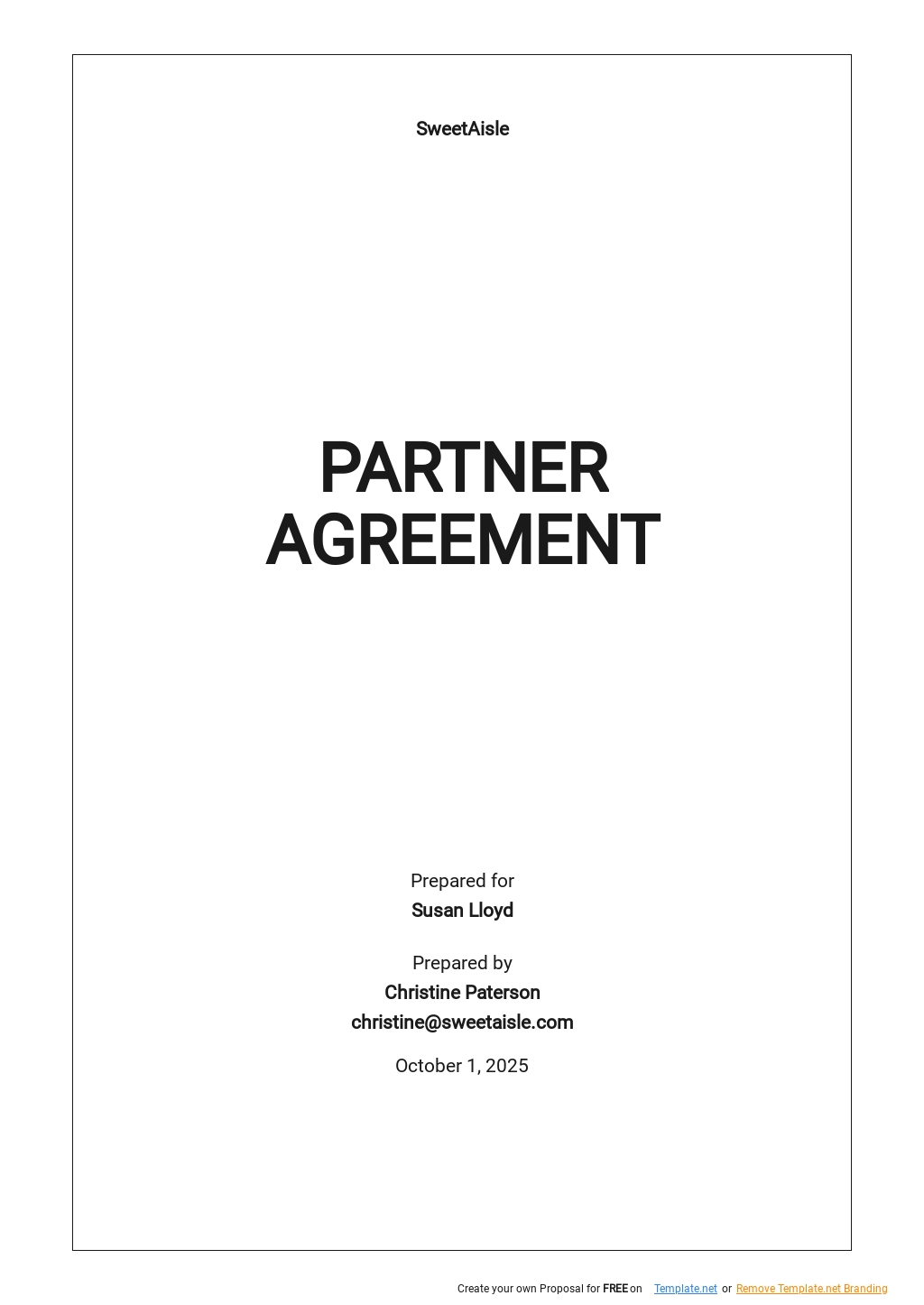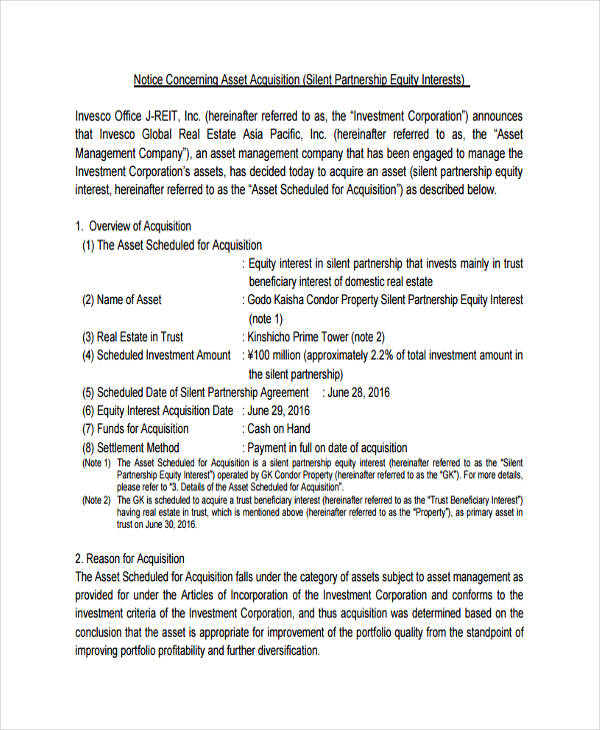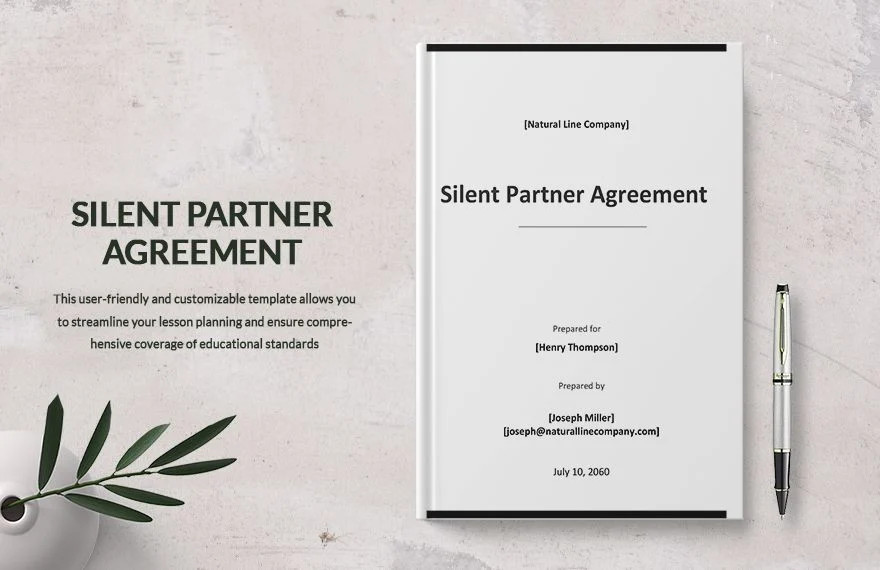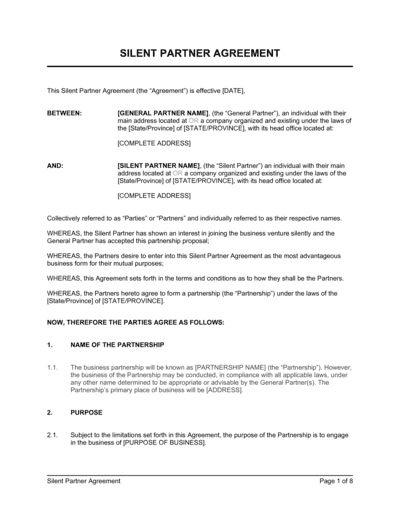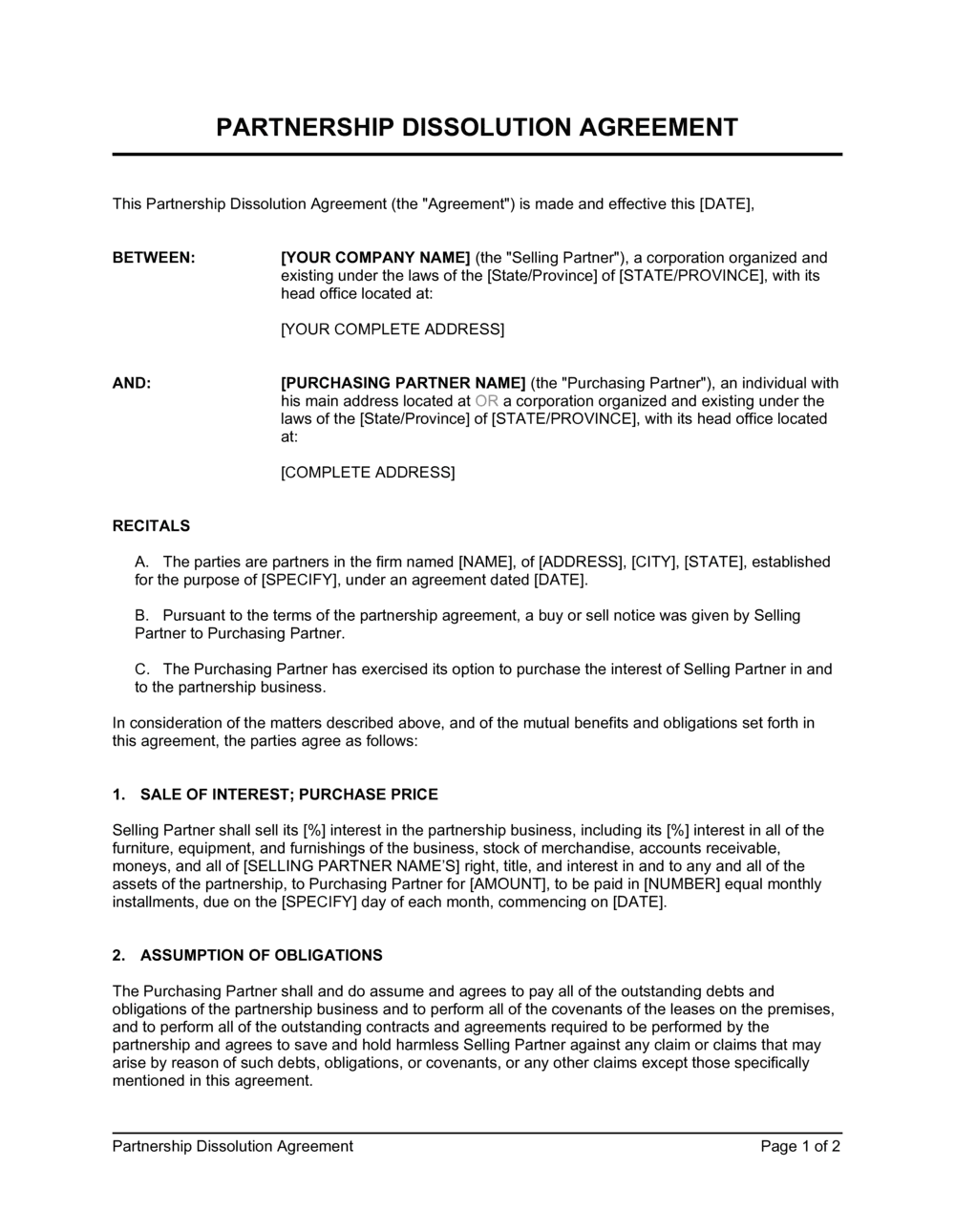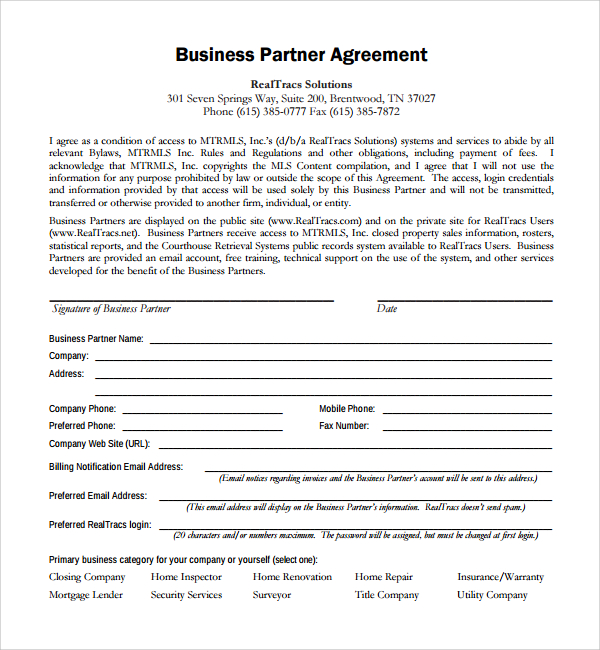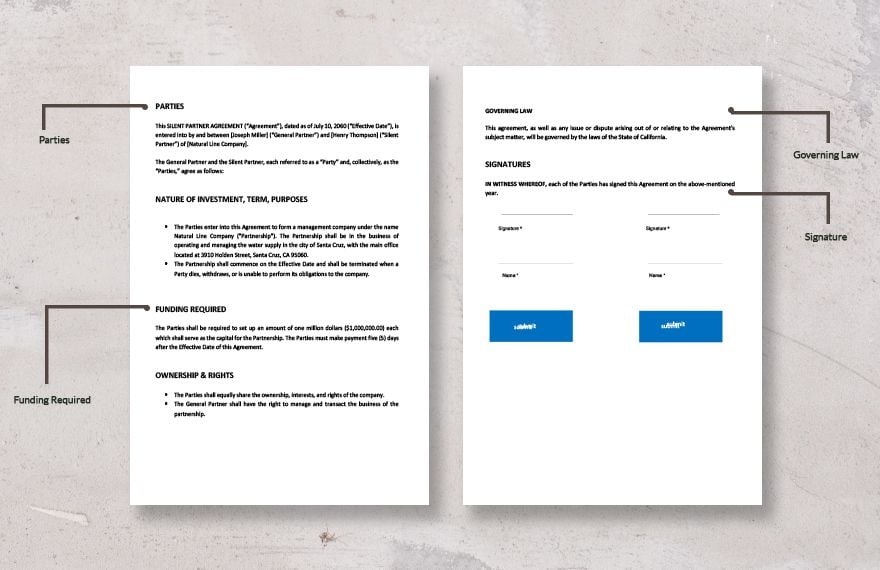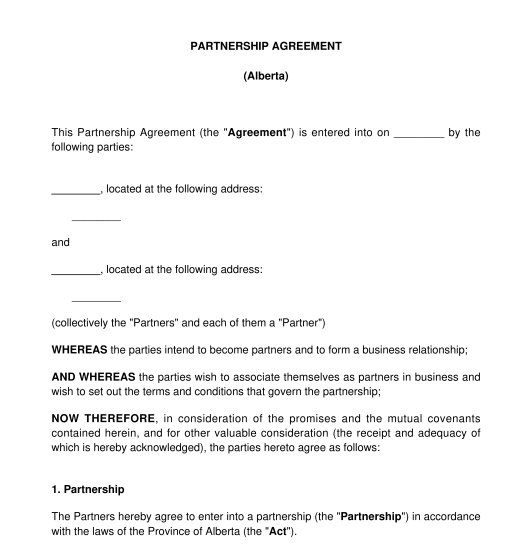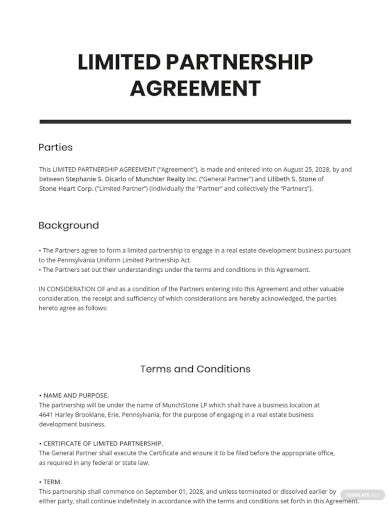Silent Business Partner Agreement Sample

The use of silent business partner agreements is quietly gaining traction among entrepreneurs and investors seeking flexible collaborations, prompting legal professionals to examine their implications and best practices.
A silent business partner agreement, in essence, outlines the terms of a partnership where one partner provides capital and potentially expertise but remains largely uninvolved in the daily operations and public face of the business. This arrangement, while not new, is seeing increased adoption due to its ability to facilitate investment without requiring active management participation from all parties. It allows for blending capital resources with the active management capabilities of another partner.
Understanding the Agreement
These agreements are legally binding contracts that define the roles, responsibilities, and financial stakes of each partner. They meticulously detail the profit-sharing arrangement, the level of involvement (or lack thereof) of the silent partner, and the decision-making processes that will govern the business. Due to complexity and implications, seeking professional legal counsel when establishing this kind of partnership is imperative.
Key Elements
The core of a silent business partner agreement lies in clearly defining the scope of the silent partner's involvement. This typically includes specifying that they have no managerial authority, no obligation to participate in day-to-day operations, and no direct interaction with employees or customers. Clear limits on the silent partner's involvement can also help to avoid potential liability issues.
Financial contributions, profit distribution, and loss allocation are also essential components. These sections outline the initial investment made by the silent partner, the percentage of profits they are entitled to, and how any losses will be shared between the partners. It also needs to stipulate what the responsibilities and rights of each partner are in the event of a business failure or dissolution.
Furthermore, the agreement should address how disputes will be resolved, often through mediation or arbitration. The agreement will specify the process of conflict resolution and provide a framework for addressing any misunderstandings or disagreements that may arise during the course of the partnership.
The Rise in Popularity
Several factors contribute to the increasing popularity of these arrangements. First, they provide a pathway for passive income generation, attracting investors who prefer not to be actively involved in the management of a business. Investors can diversify their portfolio and benefit from business growth without the demands of daily operations.
Second, they allow entrepreneurs to secure funding without relinquishing control of their businesses. The arrangement can be attractive to entrepreneurs who want to retain decision-making authority while benefiting from financial backing and expertise.
Third, they can facilitate collaborations between individuals with complementary skills and resources. Entrepreneurs can leverage the financial resources and business acumen of silent partners to drive growth and expansion.
Potential Pitfalls and Considerations
While silent business partner agreements offer numerous advantages, potential drawbacks exist. One key challenge is ensuring clear communication and transparency between the partners, even with limited interaction.
Disagreements can arise if the silent partner feels uninformed or excluded from important decisions, even if their involvement is intentionally limited. It's crucial for the agreement to outline communication protocols and reporting requirements to foster trust and understanding.
Another challenge lies in navigating potential conflicts of interest, especially if the silent partner has other business ventures. The agreement should address how such conflicts will be managed to protect the interests of the partnership.
The Legal Landscape
Legal experts emphasize the importance of consulting with experienced attorneys when drafting silent business partner agreements. A well-drafted agreement is essential for protecting the rights and interests of all parties involved and mitigating potential disputes.
"A carefully constructed agreement is the foundation for a successful silent partnership,"says Jane Doe, a partner at Smith & Jones Law Firm, specializing in business law.
These agreements should comply with all applicable state and federal laws, including those related to partnership formation, securities regulations, and contract enforcement. Laws related to business partnerships can vary, and it is the responsibility of all partners to be fully informed before entering into an agreement.
Impact and Future Trends
The rise of silent business partner agreements has the potential to reshape the landscape of entrepreneurship and investment. By providing a flexible and adaptable framework for collaboration, these agreements can fuel innovation, drive economic growth, and empower individuals to pursue their business goals.
As the demand for these agreements continues to grow, legal professionals are expected to refine their practices and develop standardized templates to streamline the process and ensure clarity. The future might see more sophisticated platforms to manage these partnerships digitally, which can enhance transparency.
Ultimately, the success of silent business partner agreements hinges on mutual trust, open communication, and a clear understanding of the roles and responsibilities of each partner. Building a foundation of trust and having an enforceable agreement are key.
